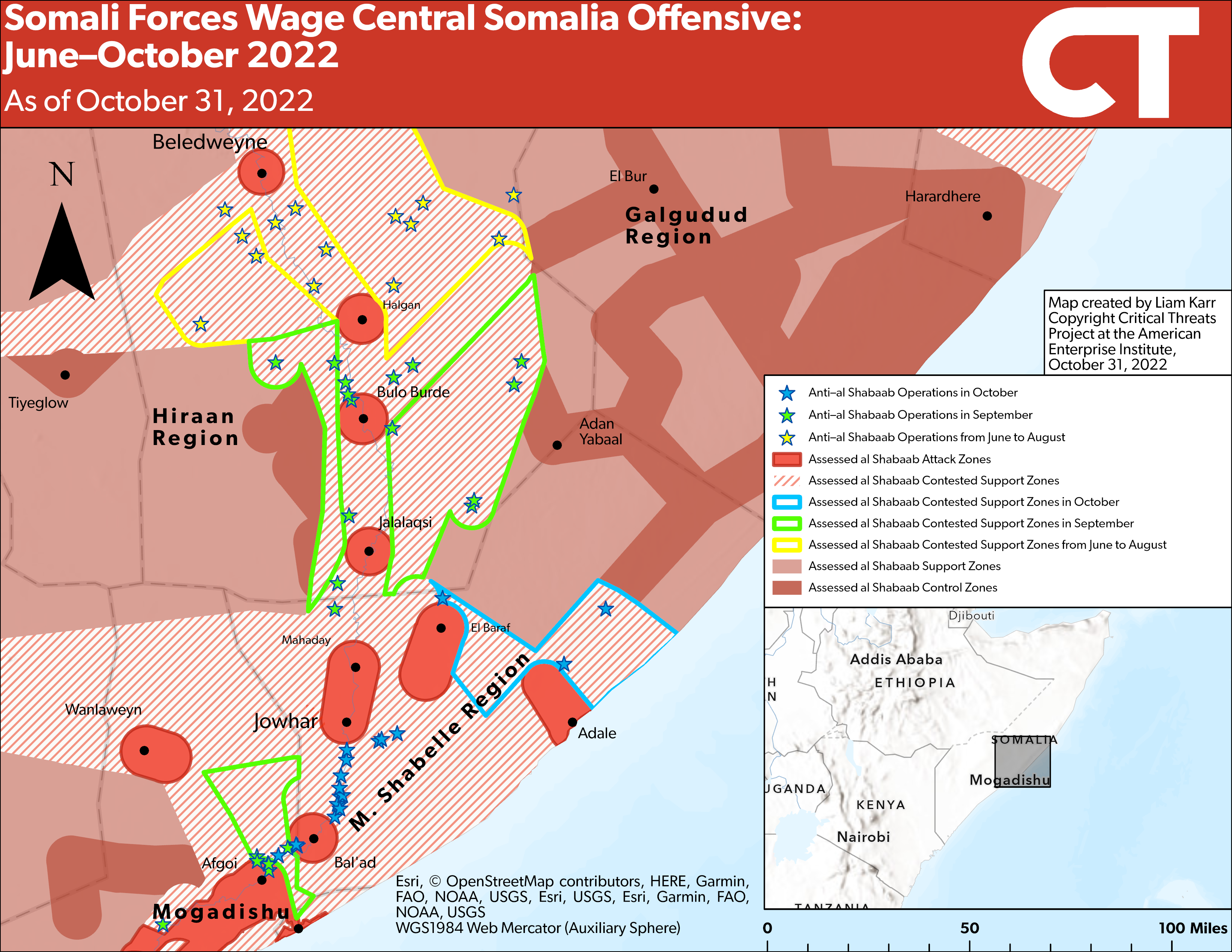Salafi-Jihadi Global Tracker
The Salafi-Jihadi Global Tracker provides analysis and assessments of major developments related to the Salafi-jihadi movement.
Salafi-Jihadi Global Tracker: Al Shabaab Conducts Largest Bombing Since 2017 in Retaliation for Losses in Central Somalia
[Notice: The Critical Threats Project frequently cites sources from foreign domains. All such links are identified with an asterisk (*) for the reader’s awareness.]
Key Takeaway: Al Shabaab carried out its deadliest attack since 2017 on October 29, killing more than 100 people at the Education Ministry in Somalia’s capital. The group has conducted a series of high-profile attacks in response to an ongoing campaign against its positions in central Somalia.
Al Shabaab attacked the Somali Ministry of Education in Mogadishu on October 29. Two suicide vehicle-borne improvised explosive devices (SVBIEDs) struck the ministry building near the busy Kilometer 4 (KM4)/Zoobe junction area at lunchtime. The explosions killed* at least 104 people and wounded over 300 others.
The attack is al Shabaab’s deadliest since October 2017 and mirrors several other previous massive attacks in Somalia’s capital. Al Shabaab’s deadliest attack on record is an October 2017 suicide bombing that killed over 500 people. The 2017 attack and an October 2011 bombing also occurred in the KM4/Zoobe area. The October 2011 attack also targeted the Education Ministry and killed at least 100 people. The group justified its 2011 attack by accusing the Somali government of recruiting students as spies. The group similarly cited the Education Ministry’s role in “recruiting students” to the Somali National Army (SNA) following its latest attack.[1]
Similarities across these attacks indicate that al Shabaab retains key capabilities in and around Mogadishu. Attackers must bypass multiple security checkpoints to strike in the KM4/Zoobe area. Al Shabaab’s continued ability to access this area highlights shortcomings in existing security measures and likely al Shabaab infiltration of security organizations. The attack also indicates the group likely maintains strong support zones in Lower Shabelle region, bordering Mogadishu, despite federal government operations* to pressure* the group in these zones throughout September 2022.
Al Shabaab has increased suicide attacks in major Somali cities since August 2022 in response to federal forces and local militias’ offensive against its positions in central Somalia. Anti–al Shabaab forces, including SNA units and clan militias, have ousted al Shabaab from dozens of villages since August, including several* al Shabaab strongholds* that the group has held for years. Al Shabaab has responded with two suicide siege attacks on hotels in Mogadishu and Kismayo and several SVBIED attacks on security forces in central Somalia. Government officials have repeatedly doubled down on their promises to continue the offensive following the attacks. Anti–al Shabaab forces have continued to advance across central Somalia while potentially preparing* to open additional fronts in other regions.* Al Shabaab will likely continue large-scale attacks on government and clan targets in a bid to sap the their will and reduce political support for the offensive’s continuation.
Figure 1. Somali Forces Wage Central Somalia Offensive: June–October 2022

Source: Liam Karr.
[1] SITE Intelligence Group, “Justifying Twin Suicide Bombings at Somali Education Ministry, Shabaab Alleges Enemy Recruiting Students into Military,” October 30, 2022, Available by subscription at www.siteintelgroup.com.

